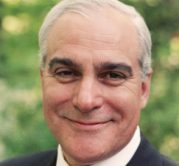Tri-Sector leadership to meet today’s challenges

Harvard Business Review recently published an article, Triple-Strength Leadership, by Nick Lovegrove and Matthew Thomas, which addressed how a career that includes experience in the private, public and social or nonprofit sectors helps to develop noteworthy leaders. The authors interviewed more than 100 of these “tri-sector leaders” around the world and found skills, motives and career trajectories that characterize them. Such leaders are important to help meet the current challenges of society from managing healthcare costs, to implementing new technologies serving society and for stabilizing financial systems to foster sustainable economic growth, which is especially important to credit unions. The insights gained from this article are particularly applicable to the credit union industry, as so many industry leaders are “tri-sector” by background or by temperament.
Tri-sector leaders develop the ability to transfer differing skills learned in one sector to another, bringing innovation and creativity to serve the general good. Business executives may excel at decision-making and allocating resources to capture attractive market opportunities. Government officials may create new workable legal and policy frameworks by bringing those having competing interests together. Nonprofit leaders focus their more limited resources and often longer time horizons to accomplish their mission.
The sense of creating public value is analogous to creating shareholder value. Tri-sector leaders balance personal and mission related objectives. For example, the need for personal financial security, usually associated with earnings in the private sector, is balanced with the desire to have positive and large-scale impact, which is usually associated with government. A strong sense of mission is the primary focus of nonprofits, especially for credit unions. Tri-sector leaders see parallels among the sectors and accurately assess the differences from sector to sector to bring effective translation of expertise and methods to the task at hand.
The career of a tri-sector leader is usually not planned. It almost happened organically for most of those interviewed for the article. But it does require a “prepared mind” and is facilitated with external support. The leader has a goal from the outset to develop skills, capabilities, values and experiences that serves him or her in general and prepares them for opportunities that may arise in varying sectors. A career may commence with an academic institution committed to educating leaders who act with integrity and a sense of purpose. Employers can strive to attract, develop, and retain exceptional tri-sector oriented talent, incorporating cross-sector experience in both training and mentoring programs and by systematically rotating professionals through exposure to private, public, and nonprofit sectors in projects and work experience.
Although credit unions are not-for-profit, they still must be successful, efficient businesses to accomplish their mission. Moreover, many credit union leaders have served in government and all work closely with both government and regulators, often in shaping policy. Credit union leaders can serve as bridges across all sectors to help meet today’s challenges and support such interdisciplinary careers. Credit unions already provide numerous role models of cross sector leadership as they pursue mission driven strategies for the benefit of members and society.

